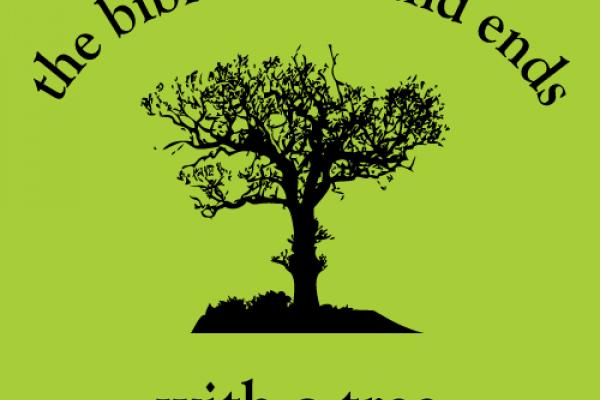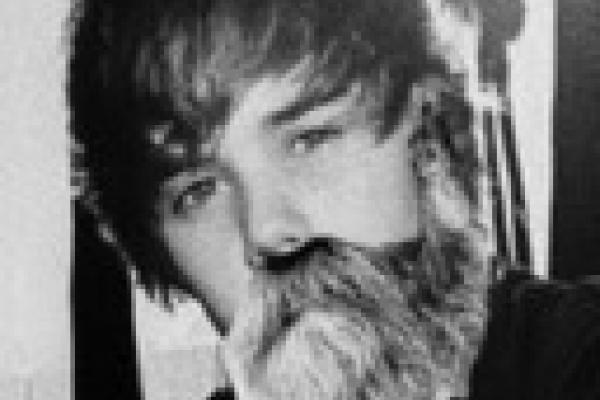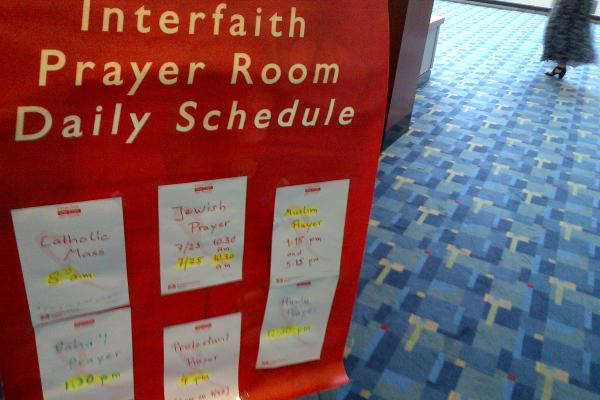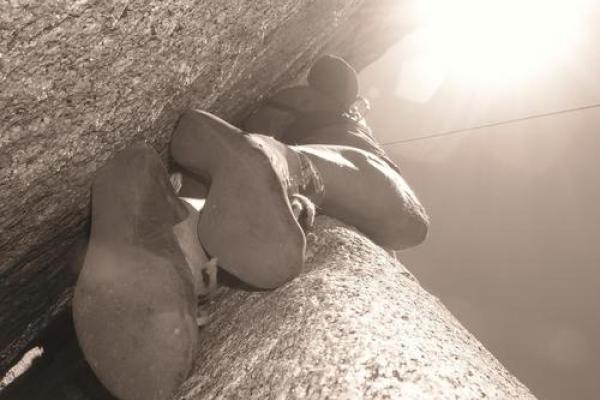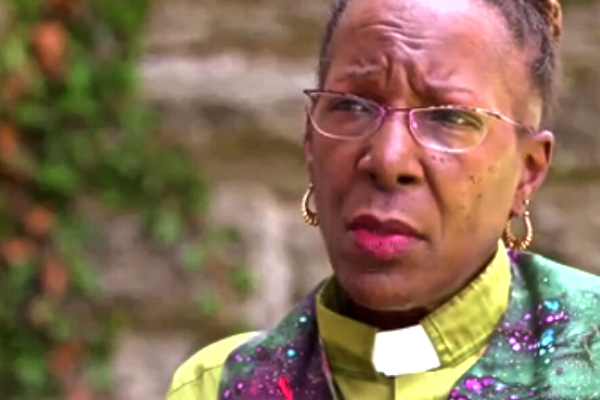Olympic enthusiasts beware: here's a video of slow motion, French music, and men throwing rocks with their non-dominant hand --- 2012 Newport Folk Festival --- the wisdom of Ralph Wiggum --- Arrested Development script revealed --- what's happening to all the watermelon seeds --- Will Ferrell, Zach Galifianakis, and Jon Hamm stop by The Daily Show. See the complete list of today's Links of Awesomeness...
Whether churchgoers realize it or not, the trees in their churchyards have religious roots.
Those tall, thin-branched trees on the corner of this city's Episcopal Church Center of Utah, Purple Robe Black Locusts, were probably named after a biblical reference to John the Baptist eating locusts and honey.
Nearby, the crab apple tree just outside the Episcopal Cathedral Church of St. Mark produces a small, sour fruit used by 15th-century monks to treat diarrhea, dysentery, and gallstones.
And the flowers of a nearby dogwood tend to bloom around Easter.
“My hope,” said University of Utah biology professor Nalini Nadkarni, “is [worshippers] will realize that nature and trees are as much a part of their sacred ground and worthy of reverence as what goes on inside a cathedral or church.”
Step aside Reinhod Bieber — there’s a new 20th century philosopher/pop star in town: Justin Buber. That’s right, the Bieb’s popular songs and tweets and Martin Buber’s existential Jewish thought combine in a way that would have the renowned thinker pulling the hairs out of his mountain-man beard.
One of Buber’s notable contributions to modern Jewish thought centers around the distinction of I-Thou (a holistic, infinite relation shared between people or God) and the I-It (a disconnected objectified relation). But if you’re Justin Buber , it might look something like this:
“Tonight I’ma be with u, shawty with u. For the space between two beings is where God may occur.” - October 26, 2011
It’s a rare place of worship where Muslims and Baha’is both congregate, and where prayer rugs share space with a silver cross, religious pamphlets on healing in Hebrew, and a bright scarlet AIDS bow. But on Wednesday afternoon, that was the scene at the Interfaith Prayer Room of the AIDS 2012 conference.
“This room is designed for Muslims, Christians, Hindus, Jews, Baha’is — for anyone who needs to find a place for quiet and prayer, and counseling, if necessary,” said Imam Dr. Abdul-Malik Ali, who just finished leading prayers beside a broad banner reading “Faith in Action — End Stigma Now.”
A sign in English, French, Spanish, and Arabic welcomed worshippers to the carpeted prayer room. Double doors cut the clamor of thousands of convention-goers to a murmur, so that inside, even the faintest clicking of the ventilation system was audible. To complete the contrast with the outside’s roar and bustle, the air was cool and the lights were gently dimmed.
Recently, Keith Anderson, my friend and co-author on Click 2 Save: The Digital Ministry Bible, wrote a post that’s been stirring a good deal of interest — and concern — across the blogosphere.
Anderson’s piece, “What Young Clergy Want You to Know,” has, I suspect, attracted so much attention because it dives right into the middle of the frustration, anxiety, and discouragement one increasingly finds among clergy of all ages and levels of experience, but that is amplified among younger clergy because they’ve made a vocational commitment to the Church at a time when such a choice seems crazier than ever.
This, as Anderson points out in the post, is because younger clergy “understand they are presiding over the death of American Christendom.”
Younger clergy, says Anderson, “are worried about job security — not just about getting paid (which is not always a given) — but whether they can do the job they feel called to do in congregations that don’t want to change.” He continues, “Being prophetic is an attribute we laud in seminary, but it can get you fired in the parish.”
Well, there you have it. The unvarnished truth of vocational experience in institutional contexts that over time wears out even the most patient, most tolerant, most enthusiastic of clergy. The wrenching responses to the post make clear that Anderson struck a nerve among his clergy colleagues.
"Then Peter began to speak to them: ‘I truly understand that God shows no partiality...'" - Acts 10:34
Give me death, give me life. Give me sickness, give me health. Give me honour, give me shame. Give me weakness, give me strength. I will have whatever you give. Amen.
Prayer by St Teresa of Avila
"Through this world of toil and snares, If I falter, Lord, who cares? Who with me my burden shares? None but Thee, dear Lord, none but Thee." - Unknown, from the gospel hymn, "Just a Closer Walk With Thee"
On Wednesday, 42 interfaith religious and advocacy organizations signed on to a letter condemning Rep. Michele Bachmann and others in Congress for their accusations that the Muslim Brotherhood had infiltrated the U.S. government.
The claims — one aimed at Sec. Hillary's Clinton aideHuma Abedin — have also been condemned by members on both sides of the aisle. One of the most impassioned defenses of Abedin came from Sen. John McCain (R - Ariz.), saying, "When anyone, not least a member of Congress, launches specious and degrading attacks against fellow Americans on the basis of nothing more than fear of who they are and ignorance of what they stand for, it defames the spirit of our nation, and we all grow poorer because of it.”
The Rev. Andrena Ingram is currently the only known Lutheran ordained pastor living openly with HIV. Her husband's death from an AIDS-related illness, and the shame that he felt, inspired the pastor to be open about her own diagnosis with HIV. She is known as "The HIV Minister" – a title that has helped others with HIV reach out to her for help.
Listen to Ingram tell her story inside the blog...
